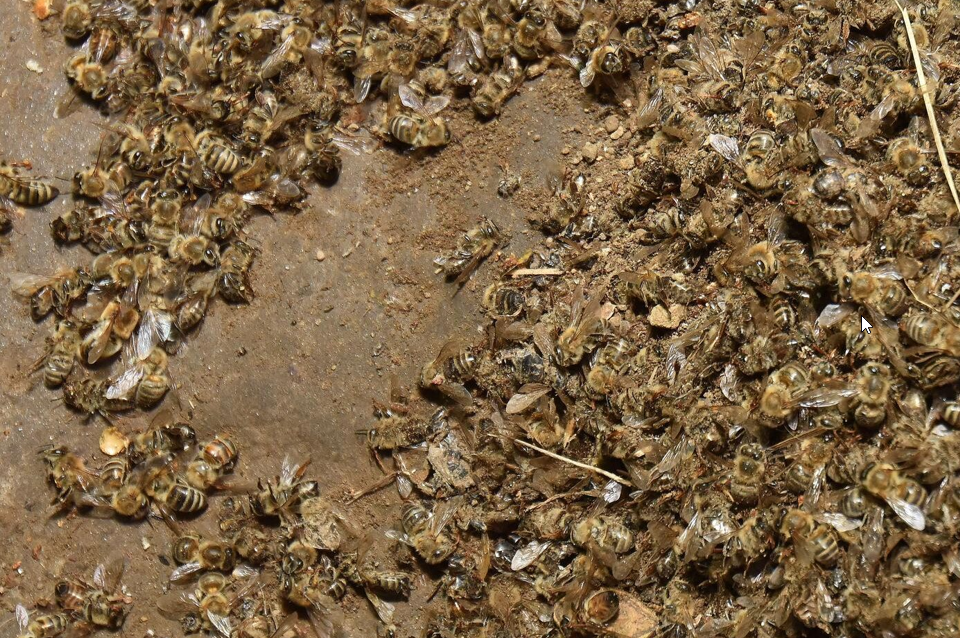Bee Die-Offs: Is Electromagnetic Radiation the Real Culprit?
In recent years, we have witnessed significant bee die-offs around the world, raising serious concerns about their long-term effects on ecosystems and agriculture. While insecticides are often blamed as the main cause, increasing evidence points to electromagnetic radiation as a potential factor, especially from 5G and 4G transmitters. Three major cases of bee die-offs—in Croatia, Germany, and the United States—raise questions about how modern technology might be affecting the survival of these vital pollinators.
Electromagnetic Radiation and Bee Sensitivity
Electromagnetic radiation (EM radiation), which includes radio waves, microwaves, X-rays, and other forms of energy, is becoming ever more prevalent in our daily lives due to modern technologies like mobile phones, Wi-Fi networks, and 5G infrastructure. Although these technologies make communication and daily activities easier, there is growing evidence about their potentially harmful effects on living organisms, especially insects, whose biological functions are sensitive to changes in electromagnetic fields.
Bees, which play a crucial role in maintaining the balance of ecosystems, are particularly sensitive to electromagnetic waves. Research indicates that radiation can interfere with their navigation systems, causing disorientation and making it difficult for them to return to their hives. Additionally, electromagnetic waves induce stress in bees, making them more susceptible to diseases and parasites, which can result in massive die-offs.
A Warning Coming True: "If Bees Disappear, We Will Too"
The renowned physicist Albert Einstein once stated: "If the bees disappear from the face of the Earth, humanity would have only four years of life left. No bees, no pollination, no plants, no animals, no people." This statement is more relevant today than ever, as we witness the continuous decline in bee populations, with potentially catastrophic consequences for the entire ecosystem.
The Case in Međimurje: 5G Infrastructure and Bee Die-Offs
In Croatia, particularly in the Međimurje region, three significant bee die-offs have been recorded over the past few years. While insecticides were initially thought to be the main cause, few have considered the possible impact of electromagnetic radiation. The locations where massive bee deaths occurred are close to 5G network base stations, suggesting potential harmful effects of radiation on bee survival. Experts have pointed out that electromagnetic waves can severely disrupt bees' ability to navigate, resulting in disorientation and the loss of swarms.
The German Example: Cities Without Bees
A similar situation has been reported in Germany, where beekeepers observed massive bee losses near large cities, where the expansion of mobile network infrastructure has been significant. Bees were abandoning their hives and not returning, and those that managed to come back were exhausted and disoriented. The die-offs mainly occurred in areas with a high number of 5G base stations, raising questions about the possible link between network expansion and the vulnerability of bee populations.
Disaster in the U.S.: What Do Empty Hives Tell Us?
In the United States, beekeepers have reported the worst bee die-offs in history. Although pesticides were initially suspected as the main cause, research has shown that the die-offs were linked to areas covered by the 5G network. Some scientists suggest that electromagnetic radiation interferes with the bees' sensitive navigation systems, preventing them from returning to their hives and causing their disappearance.
Time for Action
While public focus has mainly been on insecticides as the primary culprits, more evidence indicates the need to turn attention to the modern technology surrounding us. Many beekeepers are unaware of the risks that base stations pose to their bees and how radiation could threaten their survival. It is urgent to conduct further research and reconsider safety guidelines for the installation of 5G infrastructure.
Technologies like HSC cards, which use holographic and scalar-coded technology to transform harmful electromagnetic radiation into a form that does not harm living organisms, could be a potential solution for reducing negative effects on bees and other insects. As the modern world increasingly relies on new technologies, we must be aware that progress should not come at the expense of nature and its most important guardians, such as bees.
A Call to All Beekeepers: Join the Scientific Experiment to Protect Bees
Given the growing concern about the harmful effects of electromagnetic radiation on bees, we want to help address this issue. We invite all beekeepers in Croatia to contact us and participate in a scientific experiment aimed at protecting bee colonies. For research purposes, we are offering several HSC cards to beekeepers so they can protect their hives from electromagnetic radiation and test the effectiveness of our technology.
We believe that through joint efforts, we can find solutions to preserve bee colonies and ensure a better future for our environment and agriculture. Beekeepers interested in participating can reach out to us via our official channels.




